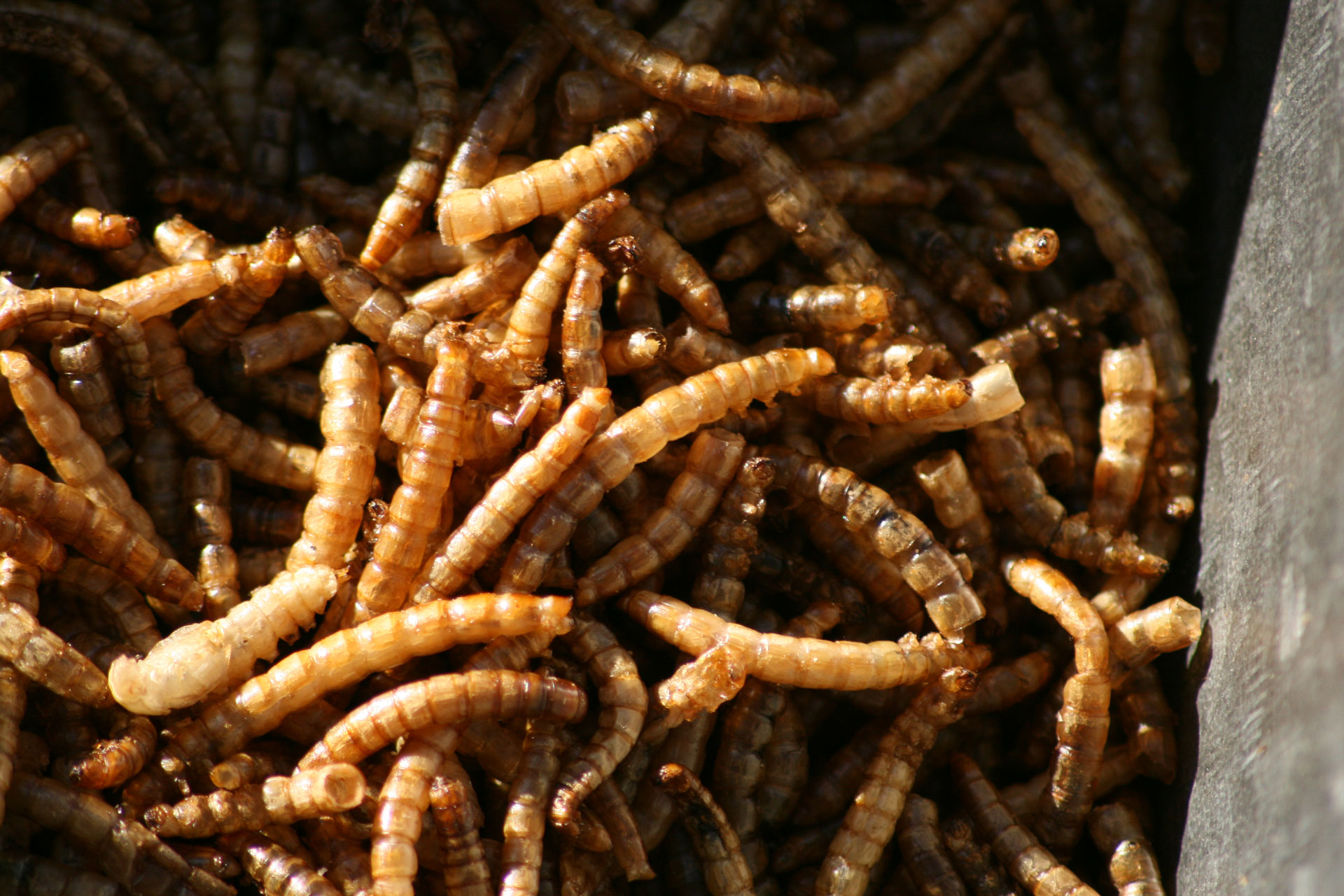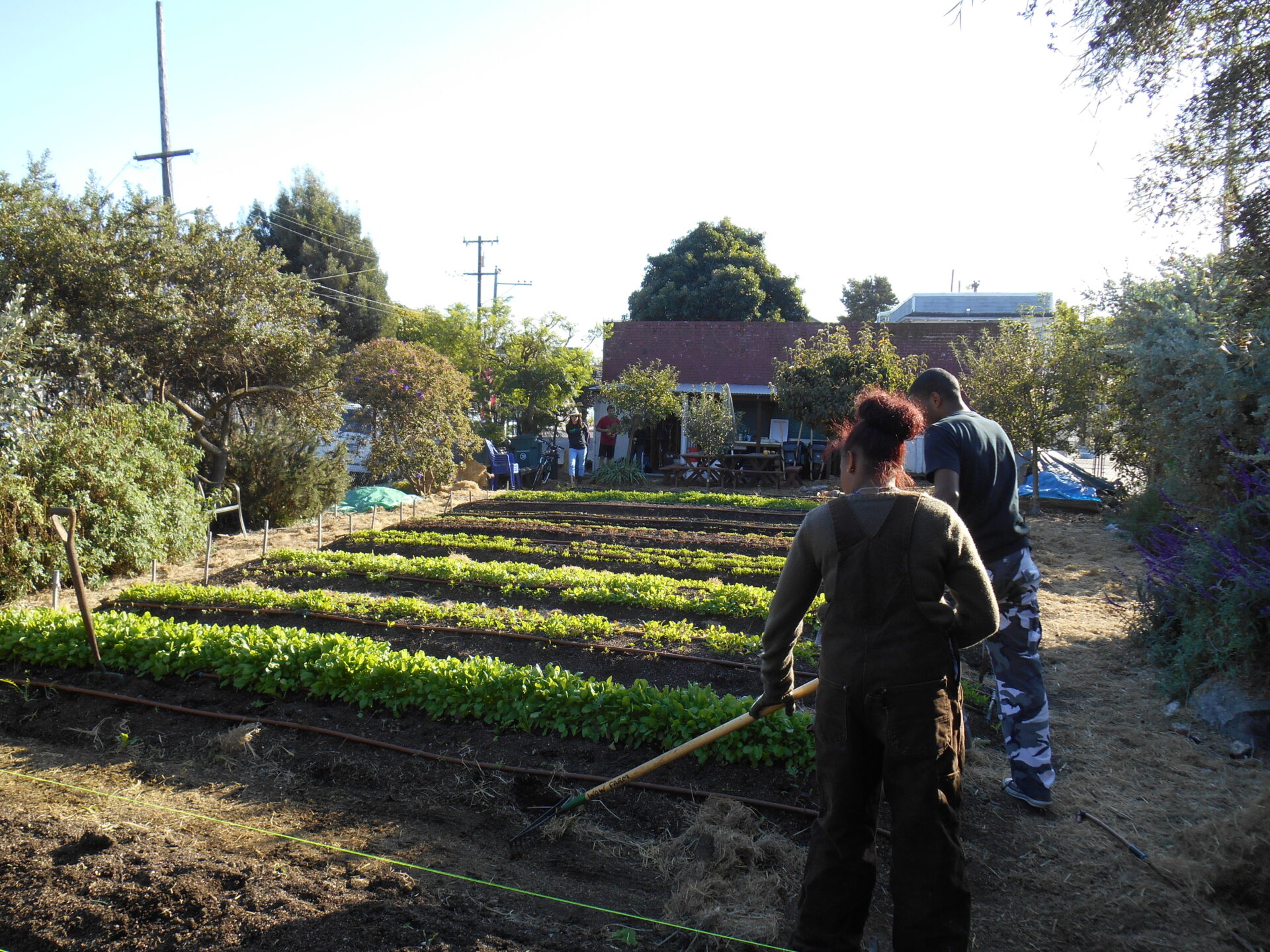
Chicken and tomatoes are a tasty duo beloved by many in popular dishes like chicken tikka masala and chicken cacciatore. This combination, delightful in the culinary sense, is also the subject of a recent integrated farming experiment. This fall, researchers at UC Davis harvested the first crop of tomatoes from a 1-acre experimental field and successfully processed the second flock of 130 broiler chickens. This acre is part of a tri-state experiment also taking place at University of Kentucky and Iowa State University, where the experiment was originally spearheaded by horticulture professor Ajay Nair. Funded by USDA, this research aims to produce science-based learnings and best practices for organic agricultural systems that integrate rotational production of crop and poultry together on the same land.
Potential of Integrated Production
While the idea of chickens alongside crops evokes an image of “traditional farming”, these systems are relatively rare in North America today. Integrated farms have the potential to help organic farmers create a more resource-efficient “closed-loop” system. For vegetable farmers looking to start an integrated system, chickens require the lowest startup costs as compared with other livestock. This type of diversified production may be especially promising given the growing consumer demand for more sustainably and humanely produced chicken.
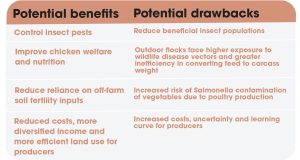
However, there are many beliefs that remain unconfirmed and questions that remain unanswered by scientific research when it comes to integrating poultry production into vegetable cropping. For instance, at what extent does manure deposited by poultry on the farm reduce the need for off-farm soil fertility inputs? What benefits can we observe when crop residue is used to supplement the diets of the chickens? What stocking rate is the most advantageous in these systems? What types of crops and breeds of chicken work the best with poultry production in different regions? And is it feasible to squeeze in a successful yield of broiler production into the transition window between different crop seasons? Finally, can all this be done effectively from a food safety perspective and economically from both a farmer and consumer level?
Study Design
To better understand and evaluate the potential to integrate poultry with crop farming from multiple perspectives, the research objectives focused on evaluating growth yields, quality of agricultural outputs, food safety risks, agroecological impacts on soil and pests, and economic feasibility of such systems.
In this experiment, broilers were raised on pasture starting at around 4 weeks of age to graze on crop residue. In the California iteration of this experiment, we raised two flocks per year in between rotations of vegetable crops in the summer and cover crops in the winter (Figure 1a). Rather than remaining in a fixed location, the pastured broilers are stocked in mobile chicken coops, commonly referred to as “chicken tractors”, which are moved to a fresh plot of land every day for rotational grazing. Four subplots distributed across the field are grazed by chickens before vegetables are planted in the spring (treatment B), and four different subplots are grazed by chickens after vegetable harvest (treatment A).
The impacts of grazing on soil and crop production of the two treatments are compared to a third control treatment of only cover crops and vegetables (treatment C), while the impacts of rotational grazing on meat production are compared to an indoor control flock.
Collaborating researchers in Iowa and Kentucky are also collecting weed and insect diversity data to better understand the impacts on crop pests and better understand how poultry affect the integrated farmland. Additional studies on animal welfare for the chickens as well as conducting cultivar trials on the success of varieties of different vegetables like lettuce, Brussels sprouts, butternut squash and spinach tested in combination with poultry are being conducted.
Challenges Identified and Lessons Learned
As the study is still underway, we cannot make any conclusions without testing and re-testing experimental results to confirm their repeatability and statistical significance across more than one growing season. So far, however, we’ve collected a great deal of initial learnings on our integrated systems.
Soil Fertility
Organic farmers know that soil amendments, such as chicken manure, release nitrogen slowly to crops over time. Factors related to timing of application, precipitation and temperature affect how soil microbes process organic material to ultimately impact the soil quality. In California, although our tomato crop received sufficient subsurface drip irrigation, we suffered low yield and tomato end rot across the treatments. This was due to the fact that our experimental plot was previously conventionally managed and very nutrient depleted, an issue which we attempted to manage by applying organic compost and liquid fertilizer to the entire field to supplement the manure deposited by the chickens. In addition, severe drought during and after the period of manure deposition may have hindered soil microbial activity and, in turn, retarded the decomposition of our cover crop residue and chicken manure into the soil.
Meat Production
Additional data remains to be collected on subsequent flocks and statistical analysis on the findings have yet to be conducted before conclusions can be drawn. Preliminary results from meat quality analysis indicate that the pasture-raised chicken yielded less drumstick meat than the indoor control and breast meat was darker and less yellow in color. They also yielded redder thigh meat and less moist breast meat than the indoor chicken when cooked. So far, broilers in California that grazed on cover crops in the spring reached a higher average market weight relative to indoor control, while broilers grazed on tomato crop residue in the fall reached a lower average market weight relative to the indoor control.
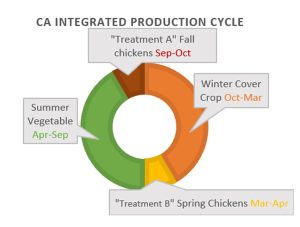
Food Safety
No presence of Salmonella has been detected thus far in the soil nor on the poultry produced in the California experiment. Collaborators in Iowa and Kentucky report that persistence of Salmonella associated with the poultry producing soil has not been observed to persist into the harvest period. While these results are promising, it should be noted that Salmonella are relatively common in poultry. Ideally, best practices can be identified that reduce the risk of Salmonella persisting in the soil environment while crops are grown following chicken grazing.
Many other anecdotal findings have emerged: In Iowa, a farmer collaborating with researchers to conduct their own on-farm iteration of the experiment has noted positive results from the poultry treatment on their spinach crop; our collaborating researchers also report that the chickens may appear to be eating an insect that is beneficial in their agricultural system, a finding which, if validated, may debunk the perception that their presence on the farm is always advantageous to pest control.
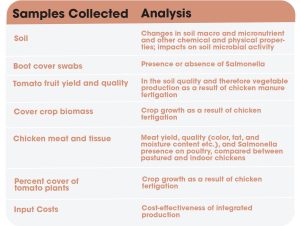
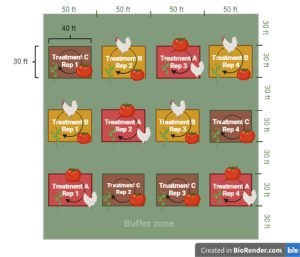
In California, we are realizing the impact the design of the chicken tractors has on labor demands. Our 5 x 10 ft-wide wheeled coop was more difficult to move in a tomato production system with raised beds and loose soil as compared to a relatively more even and firm ground in a pasture. It seems apparent that engineering considerations such as wheel type, coop material and coop weight will influence the adaptability of poultry and crop integrations. Careful timing and planning is yet another labor consideration when it comes to transitioning successfully between cropping and poultry husbandry that we encountered. Eagerly, we await to gather more information in the next year until additional conclusions to our research questions can be drawn after the study concludes in 2022.
Additional Resources
Nair, A. & Bilenky, M., (2019) “Integrating Vegetable and Poultry Production for Sustainable Organic Cropping Systems”, Iowa State University Research and Demonstration Farms Progress Reports 2018(1).

